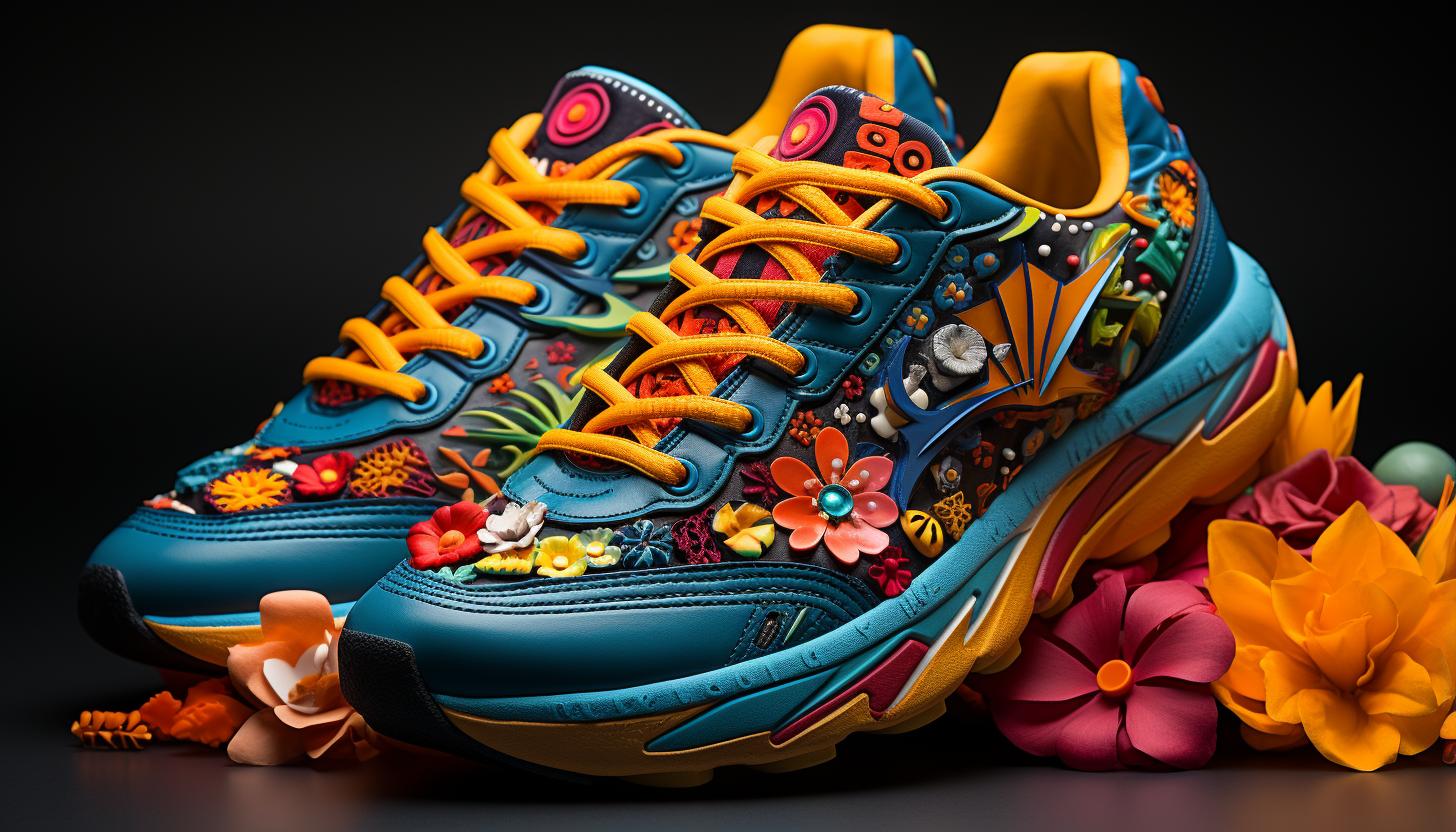Exploring Running Literature From Different Cultures and Regions

Are you ready to embark on a literary journey that will take you through the diverse landscapes of running literature?
Lace up your metaphorical shoes and get ready to explore the impact of running stories on different cultures and regions.
From comparing cultural diversity in running narratives to uncovering hidden gems from lesser-known cultures, this article will delve into the universal language of running found within global literary works.
Get ready to discover new perspectives and gain insights that will leave you inspired and enlightened.
The Impact of Running Literature on Different Cultures and Regions

The impact of running literature varies across different cultures and regions. Running narratives have the power to shape cultural identity and evoke a sense of belonging among individuals from diverse backgrounds. Whether it’s the tales of perseverance in African long-distance running or the exploration of spiritual transcendence through running in Native American literature, these stories provide a unique lens into the human experience.
In examining the influence of regional landscapes on running narratives, one can see how environment shapes the themes and motifs found in these works. For instance, in mountainous regions like Nepal, running literature often explores themes of endurance, resilience, and conquering challenges. On the other hand, stories set in urban landscapes such as New York City may focus more on the competitive nature of racing and the pursuit of personal goals.
By delving into running literature from various cultures and regions, we gain insights into universal aspects of human existence while appreciating our differences. These narratives not only celebrate athleticism but also shed light on social issues, personal growth, and cultural traditions. They provide a platform for voices that might otherwise remain unheard.
Ultimately, exploring running literature helps us understand ourselves better by connecting with others who share our love for this universal activity. It creates bridges between cultures and fosters empathy towards those whose experiences may differ from our own.
Cultural Diversity in Running Literature: A Comparative Analysis

Contrasting running literature from various backgrounds reveals the rich diversity in how different societies approach the sport. When we delve into the world of running literature, we discover a tapestry woven with cross-cultural influences and varied representations. The way different cultures depict running highlights their unique perspectives and values.
In Western literature, for example, there is often an emphasis on individual achievement and personal growth through running. These narratives focus on overcoming obstacles, pushing one’s limits, and achieving personal goals. On the other hand, African running literature frequently celebrates community spirit and collective success. It showcases the importance of unity in achieving greatness.
Asian running literature brings its own distinct flavor to the mix by exploring themes of discipline, spirituality, and mindfulness through running. This perspective emphasizes finding inner peace and harmony while engaging in physical activity.
The representation in running literature also varies greatly across cultures. Some societies have a long history of including diverse voices and experiences in their narratives, promoting inclusivity within their literary works. Others are just beginning to recognize the importance of representing marginalized groups such as women or people from non-dominant ethnic backgrounds.
Exploring the Evolution of Running Narratives in Various Regions

In various regions, running narratives have evolved over time. From the ancient tales of Greek warriors to the indigenous running stories of Native American tribes, the evolution of marathon stories reflects the diverse cultural backgrounds and histories of different communities.
Indigenous running narratives hold a special place in the world of literature. These stories often depict individuals who possess exceptional endurance and resilience, portraying them as heroes celebrated within their communities. These tales not only highlight physical prowess but also emphasize the spiritual and mental strength required for long-distance running.
Comparatively, marathon stories from other regions showcase different perspectives on endurance and achievement. While some cultures focus on individual triumphs, others emphasize collective accomplishments or use running as a metaphor for personal growth and transformation.
These narratives offer insights into how societies perceive and value athleticism throughout history. They shed light on the significance placed on perseverance, determination, and overcoming obstacles in various cultures.
Exploring the evolution of running narratives broadens our understanding of human experiences across different times and places. It allows us to appreciate the diversity that exists in storytelling traditions worldwide while recognizing universal themes that connect us all as runners – regardless of our cultural backgrounds.
Unveiling Hidden Gems: Running Literature From Lesser-Known Cultures

Unveiling hidden gems, running literature from lesser-known cultures provides a unique and often overlooked perspective on the art of storytelling. While popular literary works may dominate the mainstream, there is a wealth of hidden treasures waiting to be discovered in the running narratives of lesser-known cultures. These cross-cultural stories offer readers a chance to explore different perspectives, traditions, and experiences.
In delving into these hidden treasures, you will find that each culture has its own distinct approach to running literature. From the vivid descriptions of landscapes in African tales to the spiritual journeys portrayed in Native American folklore, these narratives reflect not only the physical act of running but also deeper cultural values and beliefs.
Reading running literature from lesser-known cultures allows for a comparative analysis that opens up new avenues for understanding. By juxtaposing these narratives with more well-known works, you can gain insights into how different societies view athleticism, endurance, and personal growth. It’s an opportunity to challenge preconceived notions and broaden your literary horizons.
Running as a Universal Language: Insights From Global Literary Works

Running as a universal language provides valuable insights into the shared human experience in global literary works. Regardless of cultural background or geographical location, runners across the world can relate to the physical and mental challenges, the triumphs and setbacks, and the joy and camaraderie that running brings.
Exploring running literature from different cultures and regions allows us to gain unique global perspectives and uncover cross-cultural connections that transcend borders.
– Diverse portrayals: Global literary works showcase diverse portrayals of running, highlighting how it is woven into various cultures. From Japanese Haiku poetry capturing the tranquility of a morning run to African narratives celebrating long-distance endurance races, these writings offer glimpses into different ways running is embraced around the world.
– Shared themes: Despite cultural differences, there are common themes that emerge in running literature globally. The pursuit of personal growth, self-discovery, resilience in overcoming obstacles, and the sense of community forged through shared experiences resonate deeply with runners from all walks of life.
– Cultural exchange: Reading about running experiences from other cultures opens our minds to new possibilities. We learn about training techniques used by elite Ethiopian athletes or discover ancient Native American rituals involving running for spiritual connection. These insights foster understanding and appreciation for diverse approaches to this universal sport.
In exploring global literary works centered around running, we find ourselves connected on a deeper level with individuals whose backgrounds may differ greatly from our own. Through their stories, we gain valuable perspectives that enrich our own understanding of what it means to be a runner in this vast world.
Conclusion
In conclusion, exploring running literature from different cultures and regions provides a fascinating journey into the universal language of human experience.
Just as each culture has its own unique customs and traditions, so too does their running literature offer diverse perspectives on the joys, challenges, and triumphs of this shared human activity.
Like a tapestry woven with threads from around the world, these literary works enrich our understanding of the global running community.
As we delve deeper into these hidden gems, we uncover not only a wealth of stories but also valuable insights that transcend borders and connect us all in our love for running.






